Albanesi G.L., J.L. Benedetto, J.L. and Gagnier, P–Y. 1995. Sacabambaspis janvieri (Vertebrata) y conodontes del Llandeiliano temprano en la Formación La Cantera, Precordillera de San Juan, Argentina. Boletín de la Academia Nacional de Ciencias, Córdoba. 60 (3–4): 519–544.
Astini R., 1992: Descripción y génesis de los bancos de oolitas ferruginosas en la base del Silúrico de la Precordillera agentina. Estudios Geológicos, 48(5–6): 297–303, Madrid.
Astini R., 1993: Facies glacigénicas del Ordovícico tardío (Hirnantiense) de la Precordillera argentina. Boletín Real Sociedad Española de Historia Natural, 88(1–4): 137–149, Madrid.
Astini, R. A., 1998a. El "Conglomerado Las Vacas" y el Grupo Trapiche de la Precordillera: tectónica distensiva en el Ordovícico superior. Revista de la Asociación Geológica Argentina, v. 53, pp. 489–503. Buenos Aires.
Astini, R. A., 1998b. Stratigraphical evidences supporting the rifting, drifting and collision of the Laurentian Precordillera terrane of western Argentina. In Pankhurst, R. J. & Rapela, C. W. (Eds.) The Proto–Andean Margin of Gondwana, Geological Society, London, Special Publications, No 142, pp. 11–33.
Astini R.A. 1998: La encrinita del tope de la Formación San Juan (Ordovícico inferior de la Precordillera): posible origen y significado estratigráfico. Ameghiniana, Resumen, Reunión Anual de Comunicaciones de la Asociación Paleontológica Argentina, Córdoba, 34(1): 113–127.
Astini, R.A. 2001. La Formación La Pola (Ordovícico Superior): relicto erosivo de la glaciación hirnantiana en la Precordillera. Revista de la Asociación Geológica Argentina, v. 56, no. 4, pp. 425–442.
Astini, R. A. and Brussa, E., 1997. Dos nuevas localidades fosilíferas en el Conglomerado de la Formación Las Vacas (Caradociano) en la Precordillera Argentina: importancia cronoestratigráfica. In: Amghiniana, Resúmenes Reunión Anual de Comunicaciones Paleontológicas, Ameghiniana, v. 34, pp. 114.
Astini R., and Buggish W., 1993: Aspectos sedimentológicos y paleoambientales de los depósitos glacigénicos de la Foramación Don Braulio, Ordovícico tardío de la Precordillera argentina. Revista Asociación Geológica Argentina, 48(3–4): 217–232.
Baldis, B. A., Beresi, M. S., 1981. Biofacies de culminación del ciclo deposicional calcáreo del Arenigiano en el Oeste de Argentina. II Congreso Latinoamericano de Paleontología, Anais, v. 1: 11–17. Porto Alegre, Brasil.
Baldis, B. A., Beresi, M. S., Bordonaro, O. L. & Vaca, A., 1982. Síntesis evolutiva de la Precordillera Argentina. V Congreso Latinoamericano de Geología, Actas, v. 4: 399–445. Buenos Aires.
Baldis, B. A. & Blasco, 1975. Primeros trilobites ashgillianos del Ordovícico sudamericano. I Congreso de Paleontología y Bioestratigrafía, Actas, 1: 33–48. San Miguel de Tucumán.
Baldis, B. A., González, Silvia B. and Pires de Carbalho, M. G., 1984. III Congreso Latinoamericano de Paleontología, Memoria, p. 68–72. México.
Benedetto, J. L., 1986. The first typical Hirnantia Fauna from South America (San Juan Province, Argentine Precordillera). In: Racheboeuf, P. R. and Eming, C. C. (Eds.), Les Brachipodes fossiles et actuels: Biostratigraphie du Paleozoic, v. 4:439–447.
Bergström S., Astini R., Huff W., Cingolani C., Brussa, E., and Kolata, D., 1998: The K–bentonite Bed succession at Rio Gualcamayo, Northern Argentina Precordillera: The most extensive Ordovician Volcanic Ash Bed Complex exposed. XIII Congreso Argentino de Geologia y VI Congreso Nacional de Geología Económica, v. II: 439–444, Buenos Aires.
Borrello, A. V., 1969. Los geosinclinales de la Argentina. Dirección Nacional de Geología y Minería, Anales XIV, 188 p., 14 pls. Buenos Aires.
Brussa, E. D., 1996. Las graptofaunas ordovícicas de la Formación Las Aguaditas, Precordillera de San Juan, Argentina. Parte I: familias Thamnograptidae, Dichograptidae, Abrograptidae y Glossograptidae. Ameghiniana, v. 33, pp. 421–434. Buenos Aires.
Brussa, E. D., 1997. Las graptofaunas ordovícicas de la Formación Las Aguaditas, Precordillera de San Juan, Argentina. Parte II: familias Crytograptidae, Dicranograptidae, Diplograptidae y Orthgraptidae. Ameghiniana, v. 34, pp. 93–105. Buenos Aires.
Buggish W. and Astini R., 1993: The Late Ashgillian Ice Age: New evidence from the Argentine Precordillera. Gondwana Eigth, Findlay, Unrug, Banks and Veevers (Eds.), pp. 439–447.
Carrera M.G., 1997a: Significado paleoambiental de los poríferos y briozoos de la Formaci6n San Juan (Ordovícico), Precordillera Argentina. Ameghiniana 34 (2):179–199.
Carrera M.G., 1997b: Evolución y recambio de las faunas de poríferos y briozoos en el Ordovícico de la Precordilera argentina. Ameghiniana 34(3):295–308.
Carrera M.G., Astini R., 1998: Valoración de las rectricciones ambientales durante la transición Arenigiano–Llanvirniano, Ordovícico de la Precordillera argentina. Rev. Asoc. Geológica Argentina 53(1):41–56.
Cuerda, A. J., Rickards, R. B., and Cingolani, C. A., 1988. A new Ordovician–Silurian boundary section, in San Juan Province, Argentina, and its definitive graptolite fauna. Journal of the Geological Society, v. 145, pp. 749–757. London.
Furque, G., 1963. Descripción geológica de la Hoja 17b Guandacol. Servicio Geológico Nacional, Boletín 92, 104 p. Buenos Aires.
Furque, G. and Cuerda, A. J., 1979. Precordillera de La Rioja, San Juan y Mendoza. In: 2do Simposio de Geología Regional Argentina, Academia Nacional de Ciencias, v. 1: 455–522.Córdoba.
González Bonorino G. and González Bonorino F., 1991: Precordillera de Cuyo y Cordillera Frontal en el Paleozoico temprano: Terrenos bajo sospecha de ser autóctonos. Revista Geologica de Chile, v. 18: 97–107.
Heredia S. Beresi M.S., 1995: Ordovician events and sea level changes on the western margin of Gondwana. , in: Cooper J., Droser M., Finney S. (Eds.), Short Papers for the Seventh International Symposium of the Ordovician System. SEPM, Fullerton, California, pp. 315–318.
Huff, W., Bergström S. and Kolata, D., 1992. Gigantic Ordovician volcanic ash fall in North America and Europe: Biological, tectomagmatic, and event–stratigraphic significance. Geology, v. 20, p. 875–878.
Huff, W. D., Bergström, S. M., Kolata, D. R., Cingolani, C. A. & Astini, R. A., 1998. Ordovician K–Bentonites in the Argentine Precordillera: relations to Gondwana margin evolution. In Pankhurst, R. J. & Rapela, C. W. (Eds.) The Proto–Andean Margin of Gondwana, Geological Society, London, Special Publications, No 142, pp. 107–126.
Huff, W., Bergström S., Kolata D., Cingolani C., Davis D., 1995: Middle Ordovician K–bentonites discovered in the Precordillera of Argentina: Geochemical and paleogeographical implications, in: Cooper J., Droser M., Finney S. (Eds.), Short Papers for the Seventh International Symposium of the Ordovician System. SEPM, Fullerton, California, pp. 343–349.
Levy, R. and Nullo, F., 1974. La fauna del Ordovícico (Ashgilliano) de Villicum,San Juan, Argentina (Brachipoda). Ameghiniana, XI(2): 173–194. Buenos Aires.
Martinez R., 1987: Estratigrafía de la Formación La Cantera, sierra de Villicum, Provincia de San Juan. (Inédito) Universidad Nacional de San Juan, Trabajo Final de Licenciatura, 75 p.
Monetta, A. M., 1978. Nuevos datos sobre la edad arenigiana de la Formación San Juan (Ordovícico) Provincia de San Juan. In: Reunión Nacional El Paleozoico de Argentina, Suplemento Acta Geológica Lilloana, tomo 14, p. 19–21. San Miguel de Tucumán.
Ortiz, A. & Zambrano, J. J., 1981. La Provincia Geológica Precordillera Oriental. VIII Congreso Geológico Argentino, Actas, v. 3: 59–74. San Luis.
Peralta, S. H., 1984. Ludlowiano en la Precordillera Oriental sanjuanina. IX Congreso Geológico Argentino, Actas, v. 1: 128–137. Mendoza.
Peralta, S. H., 1985. Graptolitos del Llandoveriano inferior en el Paleozoico inferior clástico en el pie oriental de la sierra de Villicum, Precordillera Oriental. 1ras Jornadas Sobre Geología de Precordillera, Actas, p. 134–138. San Juan.
Peralta, S. H., 1986. La graptofauna ordovícica de la Formación La Cantera, Precordillera Oriental de San Juan. In Actas, IV Congreso Argentino de Paleontología y Bioestratigrafía, v. 1, pp. 67–71. Mendoza.
Peralta, S. H., 1990. Nuevas graptofaunas de la Formación La Cantera, sierra de Villicum, Precordillera Oriental de San Juan, Argentina. Actas V Congreso Argentino Paleontología y Bioestratigrafía, v. 1, pp. 59–66. S. M. de Tucumán.
Peralta, S. H., 1993. Estratigrafía y consideraciones paleoambientales de los depósitos marino–clásticos eopaleozoicos de la Precordillera Oriental de San Juan. XII Congreso Geológico Argentino, Actas, v. 1: 128–137. Mendoza.
Peralta, S. H., 1995. La Formación Gualcamayo en la Sierra de Villicum: sus graptolitos y faunas asociadas. In: Mario A. Hünicken (ed.), Proceedings of the Latin American Conodont Symposium LACON I (1990), Boletín Academia Nacional de Ciencias, Tomo 60(3–4): 401–408. Córdoba.
Peralta S., 1998a: Formación La Cantera: una secuencia de plataforma del Ordovícico superior de la Precordillera de San Juan, Argentina. VII Reunión Argentina de Sedimentología (Resumenes), Salta, pp. 163–164.
Peralta S., 1998b: Significado estratigráfico y paleoambiental de la Formación Don Braulio, Ashgilliano tardío–Llandoveriano temprano, Precordillera Oriental de San Juan. VII Reunión Argentina de Sedimentología (Resúmenes), Salta, pp. 165–166.
Peralta, S. H., 1998c. Graptolites of the Nemograptus gracilis Zone in the black shale sequences of the San Juan Precordillera, Argentina: Its biostratigraphic and paleoenvironmental significance. Preceedings 6th International Graptolite Conference (GWG–IPA) & 1998 Field Meeting, IUGS Subcommission on Silurian Stratigraphy (J. C. Gutierrez–Marco & I. Rábano, Eds.). Temas Geológicos–Mineros ITGE, v. 23, pp. 244–247. Madrid.
Peralta, S. H. & Baldis, B. A., 1990. Glyptograptus persculptus en la Formación Don Braulio (Ashgilliano tardío–Llandoveriano temprano) en la Precordillera Oriental de San Juan, Argentina. V Congreso Argentino de Paleontología y Bioestratigrafía, Serie Correlación Geológica No 7, p. 67–72. Tucumán.
Peralta, S. and Baldis, B. A., 1992. Diamictitas del Ordovícico tardío sudamericano: correlaciones regionales y su relación con un evento glacial Gondwánico. IV Reunión Argentina de Sedimentología, Actas, v. III, pp. 169–176. La Plata.
Peralta, S. H. and Beresi, M. S., 1999. Fossil assemblages and K–bentonite beds from the Upper Member of the San Juan Formation (Early Ordovician), Villicum Range, Precordillera, Argentina. In: Quo vadis Ordovician? Short papers of the 8th International Symposium on the Ordovician System, Acta Universitatis Carolinae, Geologica, v. 43 (1/2): 495–498. Prage.
Peralta, S. H. and Carter, C. H., 1990. La glaciación Gondwánica del Ordovícico tardío: evidencias en fangolitas guijarrosas de la Precordillera de San Juan. In Actas, XI Congreso Geológico Argentino, v. 2, pp. 181–185. San Juan.
Peralta, S. H. y Carter, C. H., 1999. Don Braulio Formation (late Ashgillian–early Llandoverian, San Juan Precordillera, Argentina): stratigraphic remarksand paleoenvironmental significance. In: Quo vadis Ordovician? Short papers of the 8th International Symposium on the Ordovician System, Acta Universitatis Carolinae, Geologica, v. 43 (1/2): 225–228. Prage.
Peralta S., Uliarte E., and Lanzilotta I., 1985: Estudio de los depósitos sedimentarios ferruginosos del Silúrico de la Precordillera de San Juan. Primeras Jornadas Sobre Geología de Precordillera, San Juan, Volume I: 301–306.
Sarmiento G.N., 1985: La Biozona de Amorphognathus variabilis–Eoplacognathus pseudoplanus (Conodonta), Llanvirniano inferior, en el flanco oriental de la sierra de Villicum. Primeras Jornadas Sobre Geología de Precordillera, Actas, I: 119–123, San Juan, Argentina.
Sarmiento G.N., 1991: Conodontos de la Zona E.suecicus (Llanvirniano inferior) en la sierra de Villicum, Precordillera de San Juan, Argentina. Rev. Española de Micropaleontología 23(3):113–132.
Volkheimer, W., Pöthe de Baldis, E. D. and Baldis, B. A., 1980. Quitinozoos de la base del Silúrico de la Sierra de Villicum (Provincia de San Juan, Argentina). Revista del Museo Argentino de Ciencias Naturales "Bernardino Rivadavia", v. 2, no. 6, pp. 121–135. Buenos Aires.
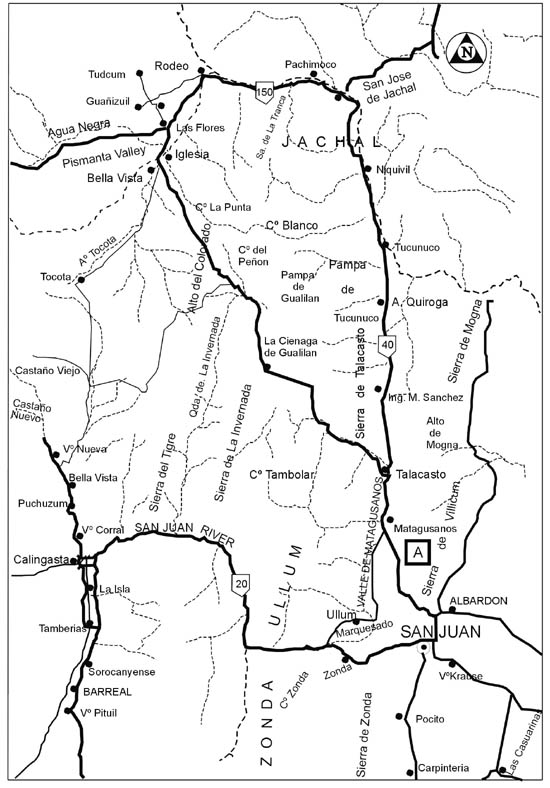
Figure 1. Location map of the Villicum area (A).
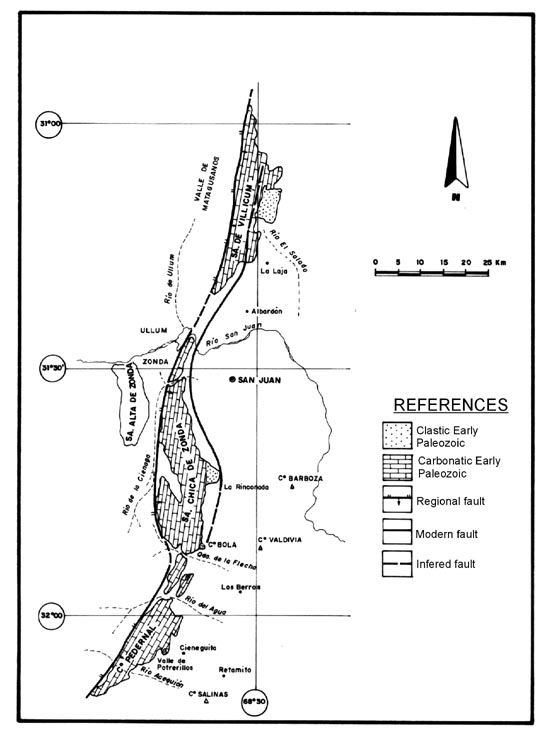
Figure 2. Regional map showing the Villicum–Zonda structural arch and lower Paleozoic clastics bordering the western flank of the Villicum and Zonda ranges. After Peralta (1993).
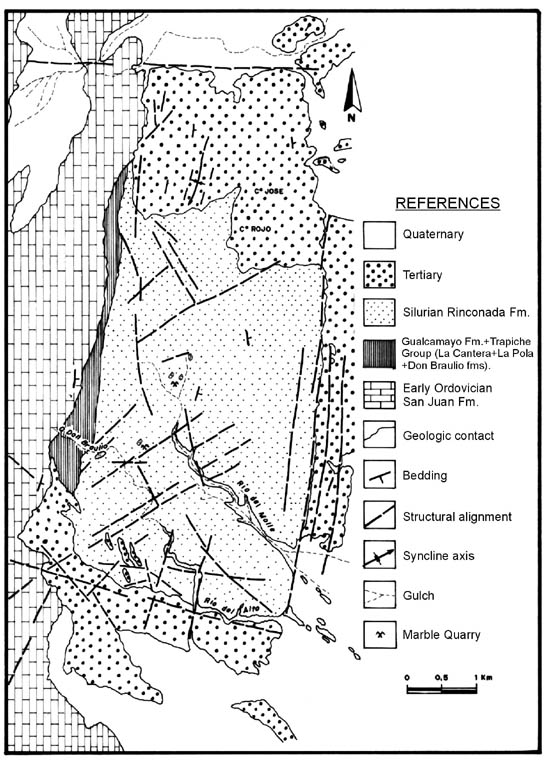
Figure 3. Geology of the Ordovician and Silurian units in the western flank of the Sierra de Villicum, showing the location of the Quebrada de Don Braulio (Don Braulio Creek). After Peralta (1993).
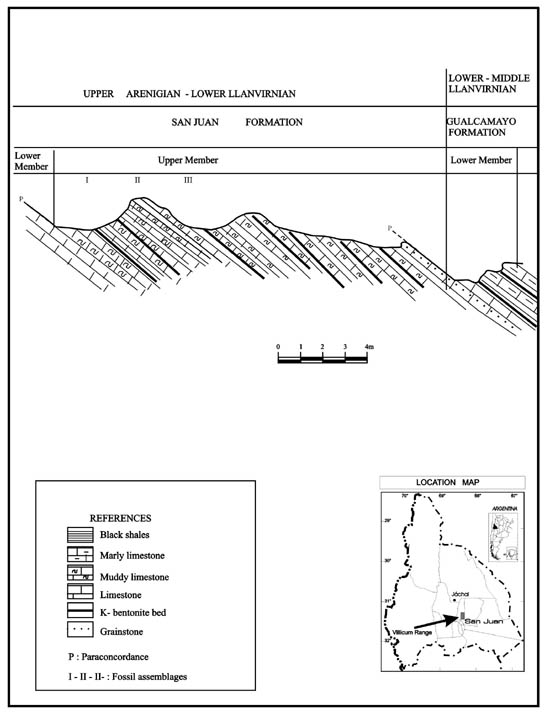
Figure 4. Stratigraphic section of the San Juan Formation, at Gustavo Creek, to the north of the Don Braulio Creek. After Peralta & Beresi (1999).
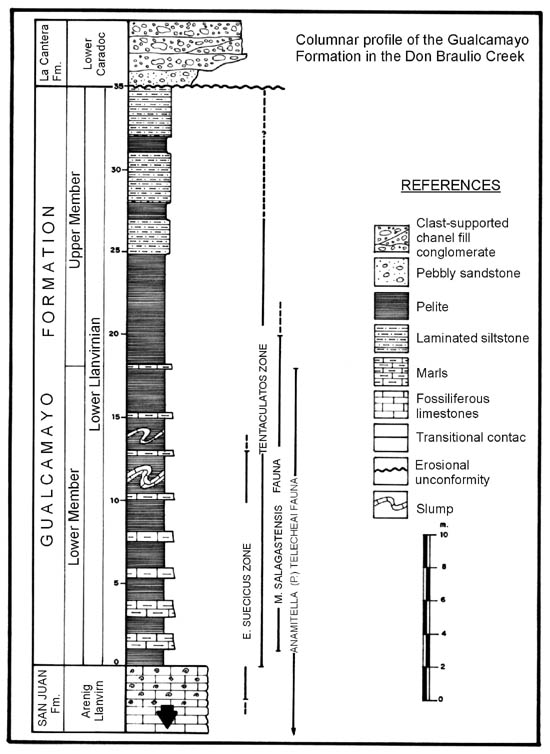
Figure 5. Stratigraphic column of the Gualcamayo Formation at Don Braulio creek.
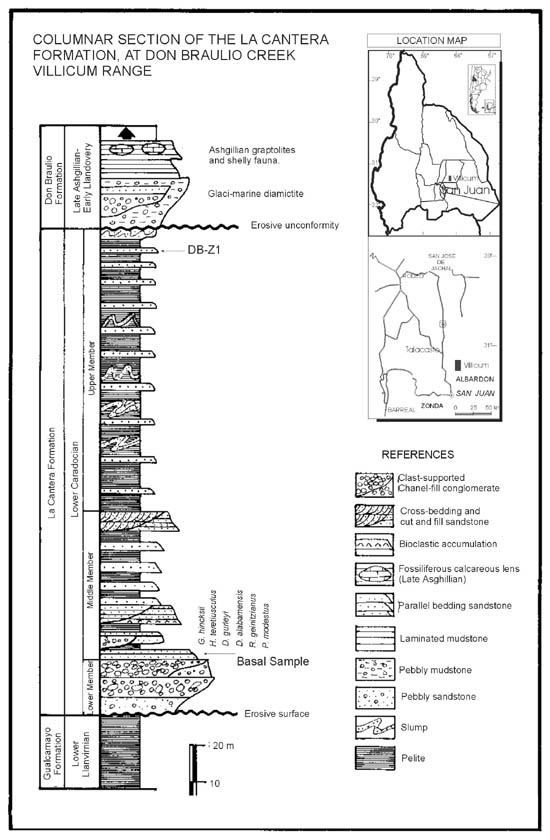
Figure 6. Stratigraphic column of the La Cantera Formation at Don Braulio creek.
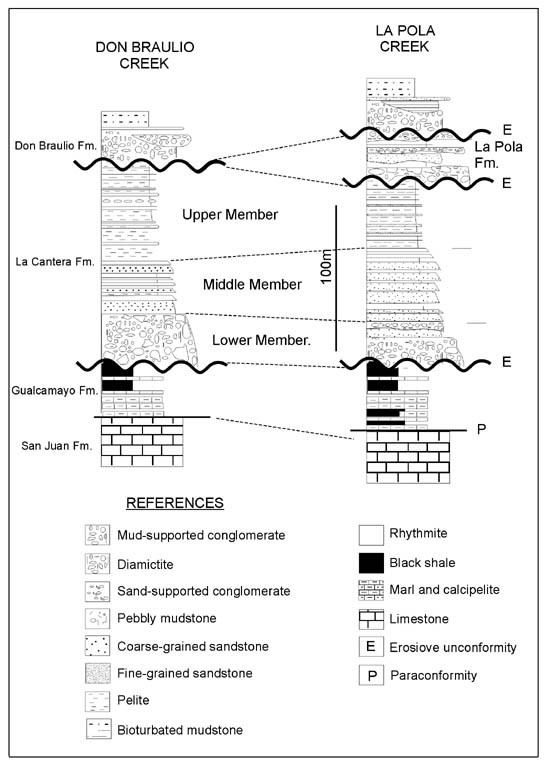
Figure 7. Stratigraphic relation of the Ordovician formations on the eatern slope of the Villicum range. After Astini (2001).
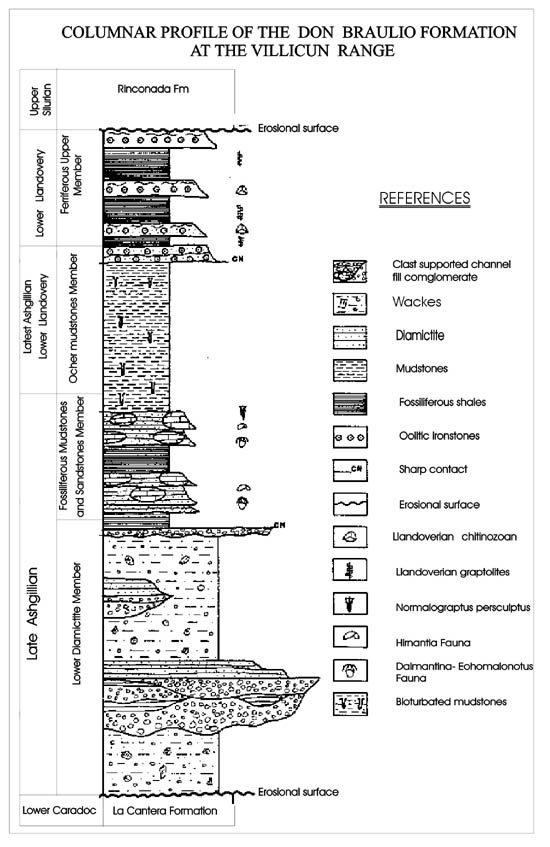
Figure 8. Stratigraphic column of the Don Braulio Formation at Villicum range. After Peralta (1993).
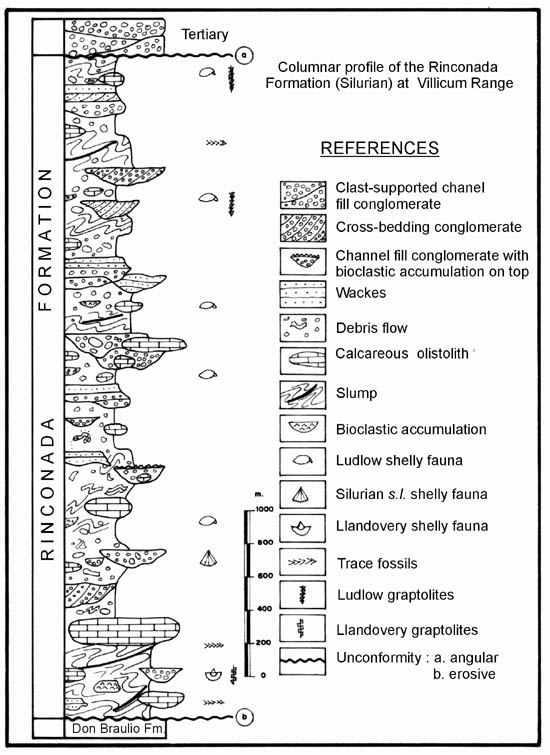
Figure 9. Stratigraphic column of the Rinconada Formation. After Peralta (1993).